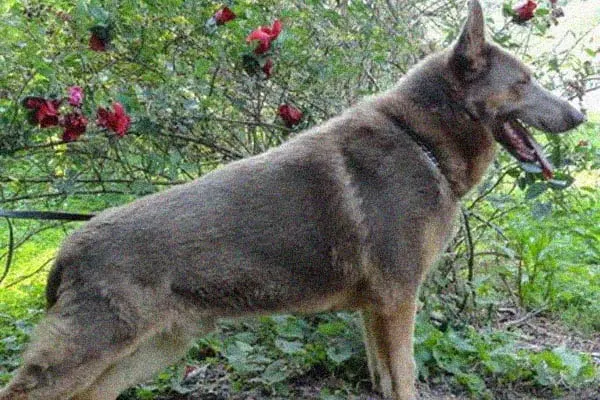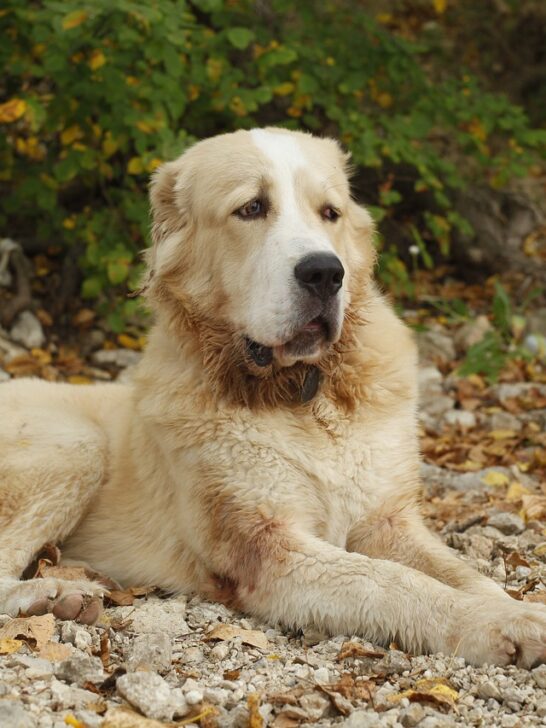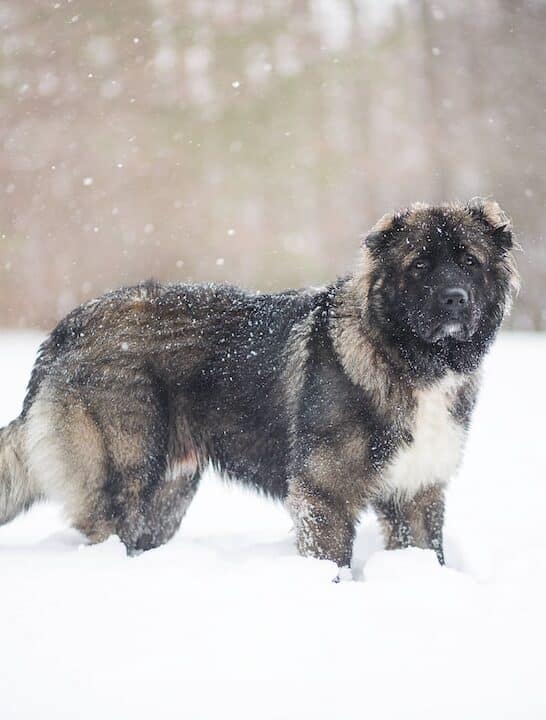The Rare Isabella German Shepherd: What Is In the Name and DNA of
Seeing the name Isabella most likely conjures images of beauty, royalty, and romance. I always picture medieval Spanish castles and long flowing Princess gowns.
Have you ever seen Isabella and German Shepherd together in the same sentence? When I first saw the term Isabella German Shepherd, I glossed over it as a term for a specialized kennel or an expensive type of GSD.
I never knew how Isabella referred to the German Shepherd until I started running across a lot of literature about lilac Siamese cats and French Bulldogs.
What is an Isabella German Shepherd? Isabella is an exceedingly rare color variation of German Shepherds that results from the combined effects of blue and liver dilution. Carried on recessive genes, the probability of inheriting both chocolate and gray for one GSD is very low.
Adding to the Isabella Shepherd’s rarity are the penalties placed on the liver and blue show dogs by the AKC and the resulting suppression of the colors by breeders.

Some basics of GSD coloration may surprise you
In addition to being bold and confident, German Shepherds need to have the correct conformation and coat type and color to enter the show ring.
But even Alsatians who meet all the criteria of a beautiful show dog face preferential treatment given to dogs of specific colorations.
You have probably noticed that when you think of a German Shepherd, you first picture a black and tan dog with a classical saddle pattern specific to the breed.
Most successful show dogs of German and American standards have a color pattern that highlights the stunning contrast between the two tones, whether black and tan or black and mahogany. However, the original Shepherd, Hektor, was sable.
It might surprise you to know that a black and tan German Shepherd is recessive to sable. Theoretically, it should be easier to breed a sable german shepherd than a black and tan.
However, show breeders have selected the black and tan with a specific pattern for decades. Since pet dogs often originate from show lines, black and tan dogs are most commonly what you will see and associate with German Shepherds.
Working lines are more often sable or darker colors, featuring full blankets in the place of saddles.
The liver, a brilliant chocolate color, is recessive and quite rare in German Shepherds. While the AKC recognizes solid liver and liver and tan in German Shepherds, there are also liver and white and, of course, Isabella variants.
Unlike their policy for white dogs, the AKC will not outright disqualify a liver German Shepherd. However, the liver is a serious fault as are washed-out or dilute colors so that Isabella would suffer double penalties in show rings.
While people fight to acquire rare colors such as lilac in the French Bulldog, breeders largely avoid liver German Shepherds.
As the race to be the most unusual and unique persists, the demand for Isabella and liver German Shepherds may increase.
Isabella German Shepherd has a fascinating but obscure history
Isabella, about color, may have originated as early as 1492. Spanish Queen Isabella proclaimed she would not change her gown during the Seige of Granada until Spain prevailed.
In the interim, her dress changed to a nondescript color of reddish with remnants of white and black.
A racier story refers to a similar story about underwear and the Seige of Ostend but places the events after the term’s coinage.
Other historians say Isabelline could have stemmed from the word Zibellino, which described the color of animal pelts popular in the early 1600s. The color was a pale gold similar to that of cougars and lions of specific shades.
Nevertheless, the first known use of the term Isabelline was in 1600, referring to the color of a certain fashion trend in dresses.
People soon interchanged Isabellan and Isabella to describe the unusual color, and its use for bird plumage and specific bear species became more prominent in 1859.
Isabella is noteworthy in that it can be breed-specific in its use. You will see Isabella and not lilac German Shepherds, although the terms refer to the same color.
Weimeraners, universally dilute dogs, can be referred to as lilac, gray, or Isabella unless they are blue. French Bulldogs are commonly lilac.
Other words that describe the same color as Isabella but are not used for the GSD are Isabella fawn, silver beige, silver-fawn, or lavender.
What is an Isabella GSD?
Isabella typically is lilac or dilute liver-colored dog. However, in the case of German Shepherds, who are not commonly a solid color, Isabella can be difficult to distinguish from a blue dilution.
The color of your dog’s nose may tell the entire story
A German Shepherd’s nose should be black according to the breed standard. However, as blue and liver dogs represent diluted colors, the nose will be lighter accordingly.
Therefore, a liver dog has a liver, brown, or reddish nose, and a blue dog would have a gray nose.
Red and black German Shepherds are prominent in the German Show lines, and some people mistake them for liver dogs. However, liver dogs cannot have black hair, and solid red dogs will have fully pigmented noses.
Isabella German Shepherds, although a double-dilute color, can have a relatively dark nose. According to Doggenetics.co.uk, an Isabella can have a pink or liver nose and all shades between them. Some may even have a dark gray nose.
What should you know about how colors like Isabella show up?
Isabella German Shepherd, like any other color variation, has a genetic basis. However, the hereditary nature of colors is not as straightforward as other traits like height and muzzle length.
In the simplest of terms, color genes occupy certain locations or loci on the chromosomes and dictate pattern expressions on the body. Dogs have several loci, and some are dominant over others.
The A-locus or agouti gene is responsible for most German Shepherd coloration. Agouti dictates the base color of all dogs, and if it shows up or not depends on whether other loci are dominant.
There are four expressions of the agouti-locus in dogs, all with their labels. Without getting into too much detail, agouti in its different expressions, also known as alleles, is responsible for four different color patterns, according to Animalgenetics.us.
Fawn/sable – Sable German Shepherds will have an indistinct blend of reds, browns, grays, and black. Each hair has bands of two or more colors often tipped with black. Sable is dominant over the other agouti expressions.
A sable dog may have two dominant alleles or one recessive allele. Dogs with recessive alleles will, of course, express the dominant sable color but have a 50% chance of passing the more recessive gene to their offspring.
Wild sable – Similar to sable, wild sable dogs have a sandy or reddish appearance instead of a predominance of black.
Black and tan/tri-color – The black and tan agouti expression in German Shepherds is recessive to the other two types.
Bi-color/ black – Bicolor, where a GSD is almost wholly black with small points of tan markings, is rare because the agouti gene responsible is recessive to all others. Some dogs with this gene expression may also be solid black.
Some sources, like Ddr-k9.com*, separate black and bicolor as genetically different, but the laboratory specifies them as variant expressions of the same allele. Different presentations illustrate the complexity of color heredity in dogs. (*link removed)
Other loci, previously alluded to, influence what color shows in dogs and in what pattern. Such a discussion is beyond the scope of our article. Note, black is carried on a different and dominant locus in many other breeds.
So how do you get an Isabella German Shepherd?
The Liver and Dilution Loci
Remember the loci we keep mentioning? The A-locus is your base color, but another named locus may transform it. A specific liver recessive gene, for example, resides on the B-locus and is responsible for a brown or chocolate color in dogs.
The liver is a dilution in German Shepherds. The B-locus suppresses the expression of any black in Shepherd’s coat. all black hairs become chocolate or liver, tan areas remain unaffected, lips, nose, and pads turn pink or brown, and eyes are amber.
Since the A-locus affects color pattern, otherwise bi-color and recessive black Shepherds will show as solid liver in dogs with B-locus dilution, and black and tans will express as liver and tan.
Blue German Shepherds inherit two recessive dilution genes on the D-locus. Unlike the liver gene, the blue gene dilutes black without completely removing all pigmentation.
As a result, dogs with dilution at the D-locus will be in various shades of blue, usually charcoal to light gray to steel blue.
Gray or mouse German Shepherds can be blue and tan, solid blue, or blue bicolor. Blue GSDs usually have gray or blue eyes. Blue GSDs are distinct from silver dogs who are variants of black and tan.
An Isabella dog is a double dilution that involves a puppy inheriting two recessive suppressing genes on the D-locus and two on the B-locus. The recessive liver gene ensures the dog will have no black hair.
The dilution gene further suppresses pigmentation in the chocolate brown areas since there are no black hairs upon which to act. Isabella dogs often have sea-green or blue-green eyes.
Do Isabella German Shepherds have additional health problems?
An Isabella color occurs naturally in the GSD breed, albeit with precise alignment of several criteria. Blue Germans Shepherds do not have blue alopecia dermatitis common in other diluted breeds like the Doberman.
Isabella German Shepherds thus far have no more health problems than dogs of the more common and standard colors.
Because dilution is a recessive trait, selecting for Isabella German Shepherds based on increased interest and demand could promote health problems that would be difficult to anticipate.
As always, if you desire an Isabella dog, go through a reputable breeder to avoid practices such as overbreeding and inbreeding that could lead to detrimental health concerns.
Conclusion
The following are two examples of Isabella dogs.
This video shows an Isabella puppy with bicolor markings. Note the tan markings with the light reddish-gray, which will progressively fade as the pup gets older.
You can see how difficult it is to distinguish a blue dilution from a double liver dilution, but this pup already exhibits a lavender sheen typical of Isabella German Shepherd.
This video shows again an Isabella GSD but with what appears to be a sable base coat. Where the dog would ordinarily be black, she is a red chestnut. This could be a liver dog except for the hint of lavender about her muzzle.
Note her light-colored nose, indicating she is not a wild sable. Take note that if this dog were black as she appears, she is blue and does not have liver dilution. Some circles refer to blue German Shepherds as Isabellas.
DNA tests can confirm the genetic coloring of dogs. Liver dogs cannot have black hair, and blue dogs cannot be liver. Isabella typically refers to dilution on the blue locus and the liver locus, resulting in a sandy-gray color.
The blue locus is more correctly a dilution locus, and therefore, Isabella German Shepherds are technically double-dilute livers.




















